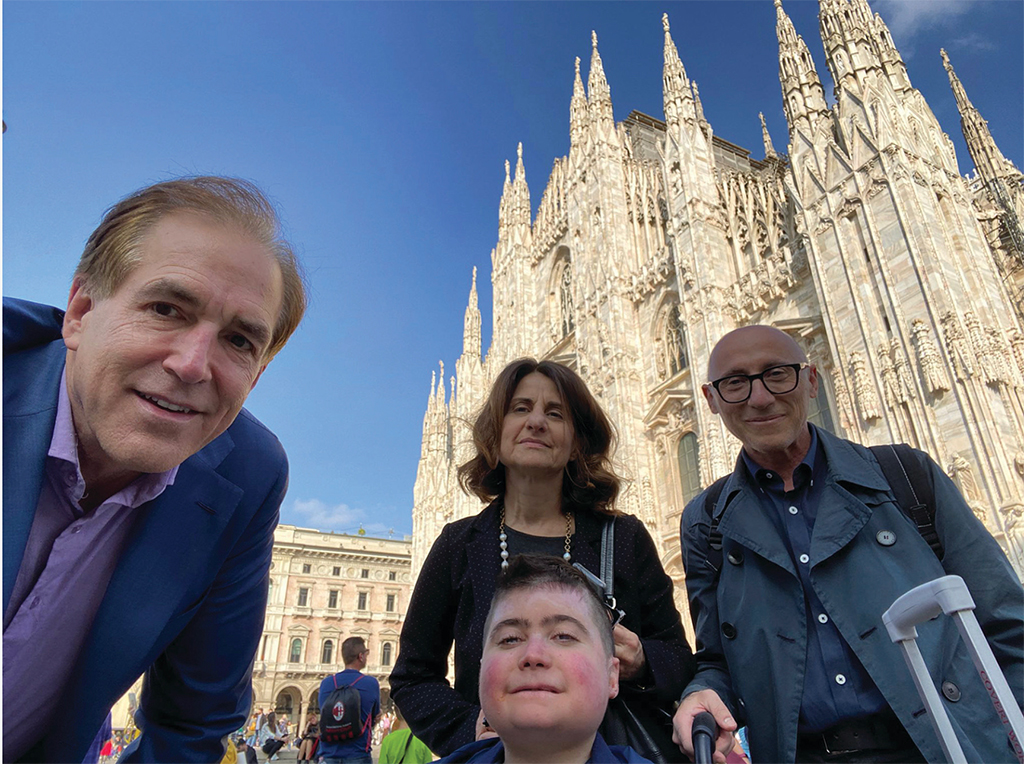Healing gel
In study, gene therapy heals open wounds in patients with blistering skin disease

Vincenzo Mascoli, 22, was diagnosed with a debilitating blistering skin condition when he was a toddler and has since had large intensely painful open wounds that can take months to heal or don’t heal at all.
The rare genetic disease, called dystrophic epidermolysis bullosa, has no cure and treatments are generally limited to keeping the wounds clean and bandaged, managing pain and preventing further injury. In severe cases, even the friction of clothing can cause blisters.
Now, thanks to a gene therapy gel developed at Stanford Medicine, Mascoli is one of 31 patients in a late-stage trial of the drug who have seen dramatic progress in their wound healing. “After four months, I saw an improvement on a large wound on my back that I had for 20 years,” said Mascoli, who lives in Italy and came to Stanford Medicine for the study. “After six months, the wound had healed completely and was much less painful.”
Peter Marinkovich, MD, a pediatric dermatologist who directs Stanford Medicine’s Blistering Disease Clinic and led the trial, said the results are life-changing for Mascoli: “Now he can bathe and sleep on his back. This treatment made a huge difference in quality of life for Vincenzo and other trial participants.”
Related Stanford Medicine
magazine content:
- May 2022: Related video: New gene therapy gel heals painful skin disease | 90 Seconds w/ Lisa Kim
- June 2015: The butterfly effect: Skin too fragile to touch. Related video: The butterfly effect
An associate professor at the Stanford School of Medicine, Marinkovich was senior author of a study detailing the clinical trial results. Lead authors of the study, which published Dec. 15, 2022, in The New England Journal of Medicine, were Isin Sinem Baci, MD, a basic life research scientist at the school, and two pediatric dermatologists — one from Children’s Health of Orange County, California, and the other from Florida-based Pediatric Skin Research.
In the double-blind, placebo-controlled trial, which included 19 patients who were 18 years old or younger, 67% of the wounds treated with the gel — applied to the skin during bandage changes — healed completely after six months of weekly applications. In comparison, 22% of the wounds treated with the placebo healed.
The experiment’s results replicate a Stanford School of Medicine nine-patient trial published in March 2022. It was the first trial of gene therapy in pediatric epidermolysis bullosa patients.
The disease is caused by a genetic mutation that prevents the patients from making collagen VII, a protein that binds the middle and outer layers of the skin together. Without this protein, the layers of skin slide across each other, which results in blisters.
The new therapy gel works by delivering a copy of the missing collagen VII gene — by way of a modified herpes simplex virus — to the skin’s surface, thereby stabilizing its structure.
Previous attempts at using viruses to deliver therapies have been thwarted by the body’s rejection of them as foreign invaders. But the herpes simplex virus circumvents the human immune system, allowing patients to repeatedly apply the gel without having an immune reaction.
“We saw no inflammation, significant side effects or immune neutralization of the drug, even with repeated administration of the gel over the six months of the trial period,” Marinkovich said.
If Marinkovich and his colleagues receive Food and Drug Administration approval for use of the drug — called B-VEC — to treat dystrophic epidermolysis bullosa, it would be the first topical gene therapy treatment approved for use in the United States.
Related Stanford News Center content:
- December 2022: Gel treatment heals blistering wounds. Related video: New gene therapy gel heals painful skin disease | 90 Seconds w/ Lisa Kim
- March 2022: Gene-therapy gel shows promise for skin disease
- November 2016: Gene therapy for blistering skin disease
- November 2014: Correcting a devastating collagen defect

